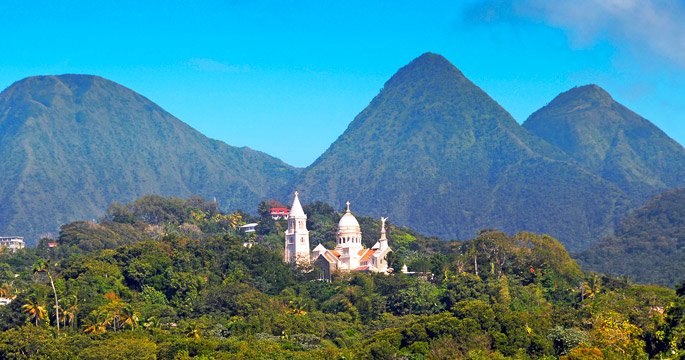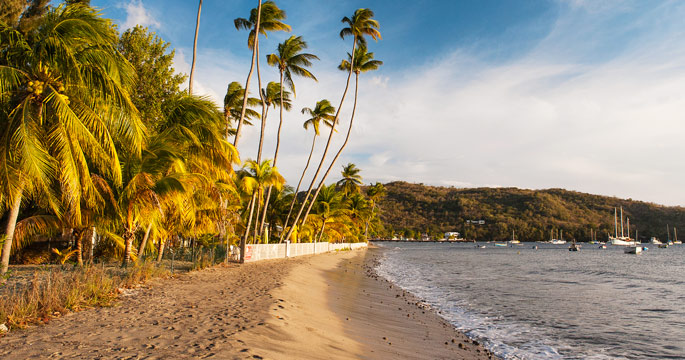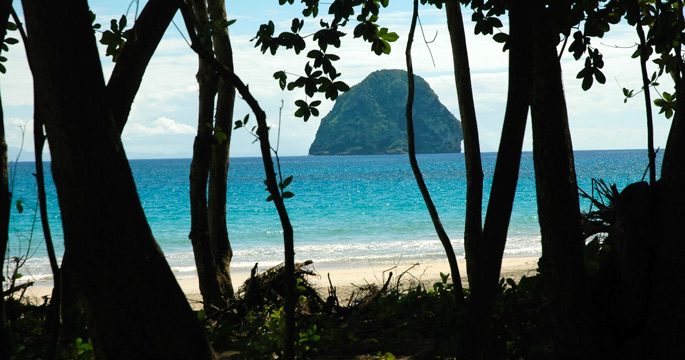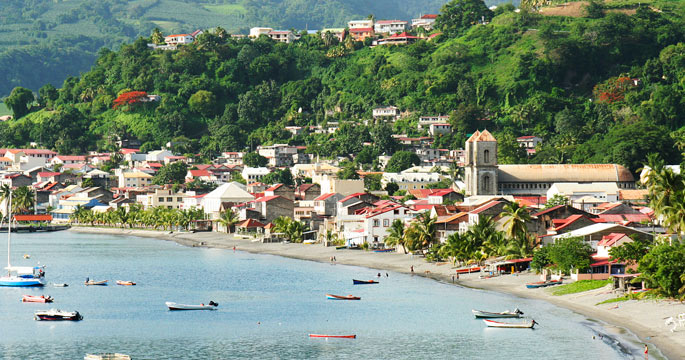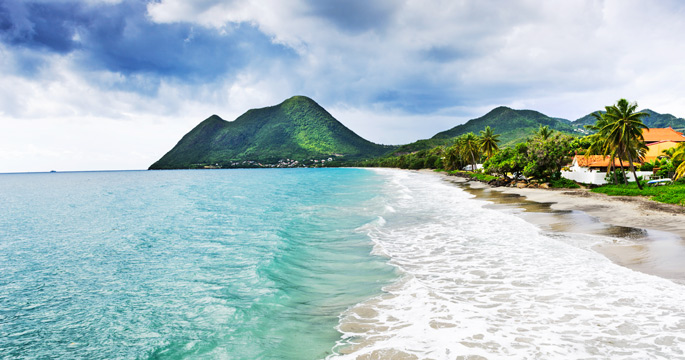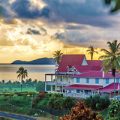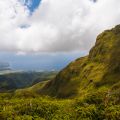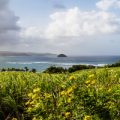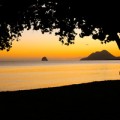Martinique is classic Caribbean.Waterfalls, rainforests and secluded beaches to discover, and above it all looms a towering mist-shrouded volcano. Island culture blends the spices of Africa and the East with the sophistication of Paris. Discrete, upscale resorts and intimate inns share the countryside with red-roofed villages and makeshift coastal fishing enclaves.
1 Living in the Past
Martinique’s colorful past lives on in a diverse assembly of more than 20 museums, which offer far more than just timeworn photos and relics. One can examine Pre- Columbian art and artifacts, relive the Caribbean’s most deadly volcanic eruption or watch traditional rum makers at work. A whimsical banana museum mixes agriculture, commerce and a tasting room; another exhibition includes intricate dolls made of more than 600 types of dried vegetable leaves. Musée de la Pagerie honors native daughter Empress Josephine, and Musée du Chateau Dubuc tells the tale of another island girl who became the legendary Sultana Validé, wife of the Sultan of Constantinople.
2 Gauguin’s Muse
Take a drive in the hills and you’ll understand why Paul Gauguin never wanted to leave this island. Martinique has breathtaking views at every turn. Quaint mountain hamlets look down on church-steepled fishing villages. Hillsides overflow with sugarcane, banana trees and flowers, and above it all are volcanic vistas shrouded in clouds. It’s enough to inspire the artist in anyone, whether you bring paints and brushes or simply seek to fill your camera’s memory card.
3 Rhum, Rum, Ron
No matter how you spell it Martinique has earned a reputation for creating some of the Caribbean’s best and most memorable rums. Local distilling traditions focus on producing “rhum agricole,” which is made from the wine of freshly pressed sugarcane and not from processed molasses, as is common elsewhere. Aged versions are generally sipped over ice or served neat.
4 Isle of Flowers
The indigenous Caribe called the island Madinina; the French named it Martinique. Both mean flowers and more flowers. Everywhere there are flushes of red, pink and orange. Frangipani, hibiscus and anthuriums grace every garden. At resort entrances, meticulously maintained flower beds spell out property names. Once within, you’re sure to find a fresh bouquet in your room— and possibly petals on your bed.
5 Paris of the West Indies
The village of Saint Pierre was once a sophisticated port city of more than 30,000 and the capital of Martinique. In 1902, Mount Pelée erupted violently, destroying the town and killing most of the inhabitants. The survivors rebuilt on a more modest scale, and reminders of former glory and tragic demise can be found at sites such as the ruins of the grand theatre and in architectural details, such as the intricate wrought-iron balconies that overlook downtown’s narrow streets.
6 Hiking
Nearly half of the island is forested and is either a national park or some other form of protected land. These green spaces are crisscrossed by more than 200 miles of traditional footpaths dating from colonial days, including some 30 official and well-maintained hiking trails that are mapped and graded by degree of difficulty. Routes ascend into lush mahogany forests or wind through coastal woodlands to access deserted beaches. Serious hikers can hire a guide for a two-hour scramble up the steep trails of Mount Pelée or enjoy a more leisurely but longer ramble along a portion of the north coast that roads don’t reach.
7 Savor the Flavors
Martinique’s melting pot of cuisines draws inspiration from African, European and East Indian traditions, and favorites such as the local Colombo takes its cue from Indian curry. The island’s dominant flavors, however, are Creole and Classic French—plus some interesting fusions of the two. One can begin the day nibbling on a fresh croissant and savoring a café au lait, sample lambi with accras (conch with malanga) at lunch, adjourn for a rum-based ti punch as the sun goes down, then sup on grilled lobster with a christophine gratin.
8 Golden Crafts
The downtown shops of Fort-de-France may tempt with the latest Parisian designs, but it’s the local artwork and jewelry that make shopping so much fun. Head to the main shopping district along Rue Victor Hugo and Rue Antoine Siger, where glittering baubles beckon you into some of the finest jewelry stores. Women of Martinique love their gold jewelry and a twisted chain necklace, gold balls made into a bracelet and fiacre earrings are never too much. Fine metalwork and intricate details are signatures of Martinique’s 18-carat craftsmanship.
9 Market Value
Weekends bring out vendors, farmers and artists with bounties that passers-by find hard to resist. One of the best markets is on the way to Les Salines beach in the town of St. Anne, where spices, madras, snacks and locally grown produce and sugarcane are on display. In Fort-de-France, the Saturday morning spice market is not to be missed. Tables overflow with spiky green plantains, huge breadfruit, aromatic seasonings, homemade salsas and spiced rums.
10 Oceans, Two
Martinique has a beach for everyone, from the windswept Atlantic coast, where surfers and kite boarders play, to the calm waters of the Caribbean Sea, where families lounge in the sun and splash in the clear shallows. Sands come in all shades from volcanic blacks to dazzling coral white. Some strands sit adjacent to luxury resorts offering on-call amenities, while others provide palm-shaded solitude and opportunities for long walks with barely another soul in site.

